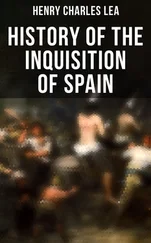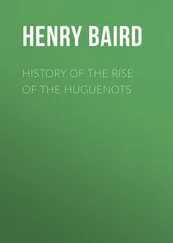REPRESSIVE LEGISLATION
The prescriptive spirit which dominated the councils of Zamora and Valladolid was not allowed to die out. That of Tarragona, in 1329, expressed its horror at the friendly companionship with which Christians were in the habit of attending the marriages, funerals and circumcisions of Jews and Moors and even of entering into the bonds of compaternity with the parents at the latter ceremony, all of which it strictly forbade for the future.[230] A few years later, in 1337, Arnaldo, Archbishop of Tarragona, addressed to Benedict XII a letter which is a significant expression of the objects and methods of the Church. In spite, he says, of the vow taken by Jaime I when about to conquer Valencia, that he would not permit any Moors to remain there, the Christians, led by blind cupidity, allow them to occupy the land, believing that thus they derive larger revenues—which is an error, as the Abbot of Poblet has recently demonstrated by expelling the Mudéjares from the possessions of the abbey. There are said to be forty or fifty thousand Moorish fighting men in Valencia, which is a source of the greatest danger, especially now when the Emperor of Morocco is preparing to aid the King of Granada. Besides, many enormous crimes are committed by Christians, in consequence of their damnable familiarity and intercourse with the Moors, who blaspheme the name of Christ and exalt that of Mahomet. “I have heard,” he pursues, “the late Bishop of Valencia declare, in a public sermon, that in that province the mosques are more numerous than the churches and that half, or more than half, the people are ignorant of the Lord’s prayer and speak only Moorish. I therefore pray your clemency to provide an appropriate remedy, which would seem impossible unless the Moors are wholly expelled and unless the King of Aragon lends his aid and favor. The nobles would be more readily brought to assent to this if they were allowed to seize and sell the persons and property of the Mudéjares as public enemies and infidels, and the money thus obtained would be of no small service in defending the kingdom.” The Christian prelate, not content with directly asking the pope to adopt this inhuman proposition, sent a copy of his letter to Jean de Comminges, Cardinal of Porto, and begged him to urge the matter with Benedict, and in a second letter to the cardinal he explained that it would be necessary for the pope to order the king to expel the Moors; that he would willingly obey as to the crown lands, but that a papal command was indispensable as to the lands of others. It was only, he added, the avarice of the Christians which kept the Moors there.[231] We shall see how, two hundred and seventy years later, an Archbishop of Valencia aided in bringing about the final catastrophe, by a still greater display of saintly zeal, backed by precisely the same arguments.
This constant pressure on the part of their spiritual guides began to make an impression on the ruling classes, and repressive legislation becomes frequent in the Córtes. In those of Soria, in 1380, the obnoxious prayer against Christians was ordered to be removed from Jewish prayer-books and its recitation was forbidden under heavy penalties, while the rabbis were deprived of jurisdiction in criminal cases between their people. In those of Valladolid, in 1385, Christians were forbidden to live among Jews, Jews were prohibited to serve as tax-collectors, their judges were inhibited to act in civil cases between them and Christians and numerous regulations were adopted to restrain their oppression of debtors.[232] In 1387, at the Córtes of Briviesca, Juan I enacted that no Christian should keep in his house a Jew or Moor, except as a slave, nor converse with one beyond what the law allowed, under the heavy penalty of 6000 maravedís, and no Jew or Moor should keep Christians in his house under pain of confiscation of all property and corporal punishment at the king’s pleasure.[233] It seemed impossible to enforce these laws, and the Church intervened by assuming jurisdiction over the matter. In 1388 the council of Valencia required the suspension of labor on Sundays and feast-days, and it deplored the injury to the bodies and souls of the faithful and the scandals arising from the habitual intercourse between them and the infidels. The dwellings of the latter were ordered to be strictly separated from those of the former; where special quarters had not been assigned to them, it was ordered to be done forthwith and, within two months, no Christian should be found dwelling with them nor they with Christians. If they had trades to work at or merchandise to sell they could come out during the day, or occupy booths or shops along the streets, but at night they must return to the place where they kept their wives and children.[234]
This segregation of the Jews and Moors and their strict confinement to the Morerías and Juderías were a practical method of separating the races which was difficult of enforcement. The massacres of 1391 showed that there were such quarters generally in the larger cities, but residence therein seems not to have been obligatory, and Jews and Moors who desired it lived among the Christians. In the restrictive laws of 1412, the first place is given to this matter. Morerías and Juderías are ordered to be established everywhere, surrounded with a wall having only one gate. Any one who shall not, in eight days after notice, have settled therein forfeits all his property and is liable to punishment at the king’s pleasure, and severe penalties are provided for Christian women who enter them.[235] An effort was made to enforce these regulations, but it seemed impossible to keep the races apart. In 1480 Ferdinand and Isabella state that the law had not been observed and order its enforcement, allowing two years for the establishment of the ghettos, after which no Jew or Moor shall dwell outside of them, under the established penalties, and no Christian woman be found within them.[236] The time had passed for laws to be disregarded and this was carried into effect with the customary vigor of the sovereigns. In Segovia, for instance, on October 29, 1481, Rodrigo Alvárez Maldonado, commissioner for the purpose, summoned the representatives of the Jewish aljama, read to them the Ordenanza, and designated to them the limits of their Judería. All Christians resident therein were warned to vacate within the period designated by the law; all Jews of the district were required to make their abode there within the same time, and all doors and windows of houses contiguous to the boundaries, on either side, whether of Jews or Christians, were ordered to be walled up or rendered impassable. The segregation of the Jews was to be absolute.[237]
REPRESSIVE LEGISLATION
We shall see in the next chapter how successful were the efforts of the Church in arousing the greed and fanaticism of the people and in repressing the kindly fellowship which had so long existed. From this the Jews were the earliest and greatest sufferers, and it is necessary here to say only that in the cruel laws which marked the commencement of the fifteenth century both Moor and Jew were included in the restrictions designed to humiliate them to the utmost, to render their lives a burden, to deprive them of the means of livelihood and to diminish their usefulness to the State. These laws were too severe for strict and continuous enforcement, but they answered the purpose of inflicting an ineffaceable stigma upon their victims and of keeping up a wholesome feeling of antagonism on the part of the population at large. This was directed principally against the Jews, who were the chief objects of clerical malignity, and it will be our business to examine how this was skilfully developed, until it became the proximate cause of the introduction of the Inquisition and created for it, during its earliest and busiest years, almost the sole field of its activity. Meanwhile it may be observed that, in the closing triumph over Granada, the capitulations accorded by Ferdinand and Isabella were even more liberal to Jews and Moors than those granted from the eleventh to the thirteenth century, by such monarchs as Alfonso VI, Ferdinand III, Alfonso X, and Jaime I. Unless they were deliberately designed as perfidious traps, they show how little real conscientious conviction lay behind the elaborately stimulated fanaticism which destroyed the Jews and Mudéjares.[238]
Читать дальше












